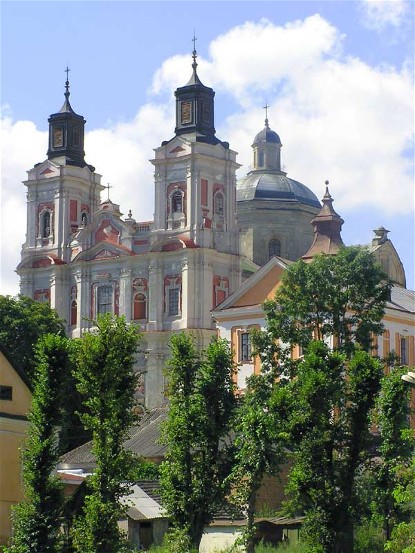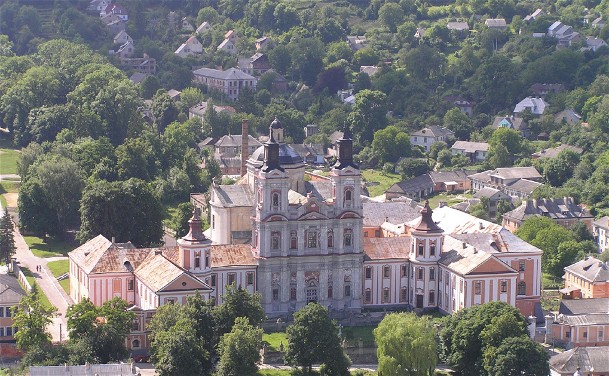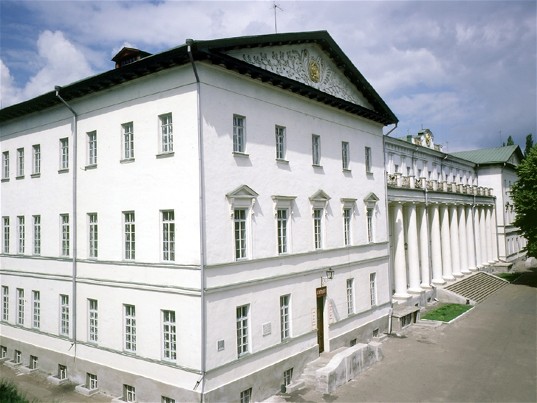Lyceum
Lyceum (ліцей; litsei). In Russian-ruled Ukraine during the 19th century lyceums resembled the institutions of higher learning. There were three lyceums on the territory of present-day Ukraine (out of seven existing in the Russian Empire): the Kremenets Lyceum in Kremenets (1819–33), the Richelieu Lyceum in Odesa (1817–65), and the Nizhyn Lyceum in Nizhyn (1832–74). In Austrian-ruled Galicia lyceums were schools for women that offered incomplete secondary education (although between 1805 and 1817 Lviv University officially had the status of a lyceum). From the end of the 19th century until 1918 there was only one Ukrainian lyceum in the region: the Ukrainian Girls' Institute in Peremyshl. In the interwar Western Ukraine under Polish rule lyceums were senior secondary schools. By 1939 there were 21 Ukrainian general education lyceums (5 state-supported and 16 private), as well as the Co-operative Lyceum in Lviv of the Audit Union of Ukrainian Co-operatives, and the state agricultural lyceum in Chernelytsia (est 1934).
In Soviet Ukraine until 1989 lyceums virtually did not exist. Yet, there were specialized schools and schools with advanced study of particular disciplines that served as embryos of the future lyceums that emerged in independent Ukraine. These lyceums in independent Ukraine are institutions of secondary education that provide specialized training of an advanced (academic) type. Based on the type of ownership, lyceums can be government-funded, communal, private, and corporate. The government-funded institutions are authorized by central authorities; communal, by the organs of local self-government (on the oblast level); private, by a license issued to a private entity by a local government; and corporate, by a partnership agreement between the state and private actors. The full course of studies in lyceums is three years, and the age of students is between 14 and 17. For comparisons, gymnasiums, the institutions with similar functions, are intended for students of 11–17 years of age.
First lyceums were established in 1989 at the Odesa Pedagogical Institute and at the Izmail Pedagogical Institute; they offered an enriched complete secondary education for selected students at the grade nine level. The years 1991–2 saw the opening of 18 new lyceums, and ten years later (in 2002–3) there were already 255 lyceums across Ukraine and almost 340 in 2007–8, including military lyceums and those with the ‘concentrated military and physical education study.’ In subsequent years different reforms of the advanced secondary education in Ukraine have been proposed, including the Statute on the academic (naukovyi) lyceum (approved by the Cabinet of Ministers of Ukraine in 2019). According to the statute, an academic lyceum should provide students with an academic training in arts, sciences, and technology. Academic lyceums can be a part of the existing institutions of higher learning or function as separate entities (in which case a lyceum has to conclude a cooperation agreement with particular university or institute).
BIBLIOGRAPHY
Alfimov, V. Litsei u systemi osvity Ukraїny (Donetsk 1996)
Polozhennia pro naukovyi litsei ta naukovyi litsei-internat. Postanova Kabinetu ministriv Ukraïny vid 22 travnia 2019 roku. No. 438: https://www.kmu.gov.ua/npas/pro-znnya-pro-naukovij-licej-ta-naukovij-licej-internat
Serhiy Bilenky
[This article was updated in 2021.]


.jpg)


%20(19th%20century).jpg)